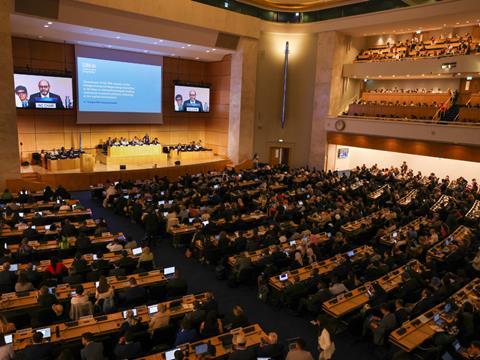
From the 5th to the 14th of August 2025, representatives from governments, NGOs, indigenous groups and industry stakeholders from across the globe are meeting in Geneva to finalise an international, legally binding treaty on plastic pollution.
In this article, we’re tracking the key developments from this historic meeting, to keep you up-to-date with the most important decisions and talking points.
INC-5.2 ends in failure
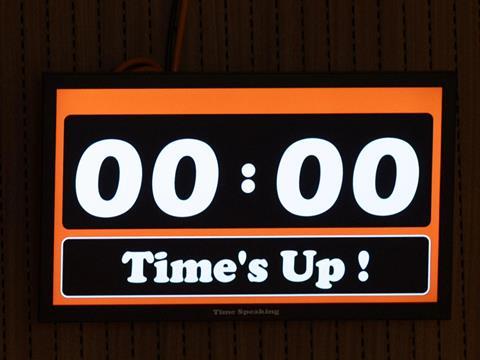
Despite hours of fraught negotiation up to the very end, and the launch of a revised draft Treaty text, INC-5.2 has ended in failure.
No consensus between attendees could ultimately be reached on the new draft text, and the way forward on a Global Plastics Treaty currently looks unclear.
Following heated criticism of the initial draft text earlier in the week, the INC-5.2 Chair unveiled a second version early on Friday morning. Delegates still found it impossible to reach a consensus on this version, however.
“After more than 24 hours of delays, we finally received a new draft—but it’s yet another letdown,” said Erin Simon, head of plastic waste and business at the WWF.
“Yes, there’s some promising language on waste management, but it’s not enough to address the growing crisis. On top of that, the decision-making rules are so strict they risk blocking real progress.”
Frustration has also been voiced at the INC process itself. “It is deeply concerning how crippled this process has now become,” comments Eirik Lindebjerg, Global Plastics Policy Adviser at the WWF.
“Futile efforts to get a treaty that everyone is happy with is amounting to nothing. If the last 10 days of negotiations have shown us anything, it’s that efforts to reach a consensus have been exhausted. No treaty will ever be weak enough to satisfy low ambition countries.”
Speaking from the event, the EU’s environment commissioner, Jessika Roswall, took a more conciliatory approach: “While the latest text on the table does not yet meet all our ambitions, it is a step forward—and the perfect must not be the enemy of the good.
“The European Union will continue to push for a stronger, binding agreement that safeguards public health, protects our environment, and builds a clean, competitive, and circular economy.”
So, what happens next? It seems likely – but by no means certain – that yet another meeting (INC-5.3?) will be scheduled. However, high-ambition countries could instead decide to come together and launch their own binding rules.
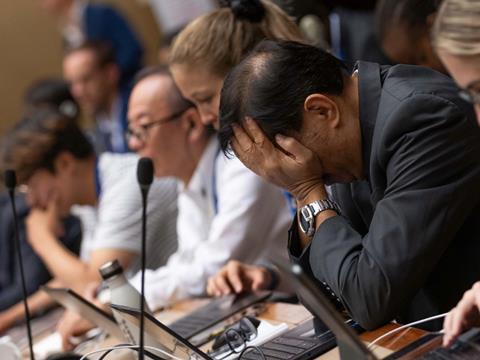
Big news from INC-5.2 – the Chair’s latest draft of the Global Plastics Treaty has been released.
It stipulates that countries should limit or ban plastic products that are likely to enter the environment, are hard to reuse or recycle, or contain “intentionally added” microplastics.
Design is also in the crosshairs – the draft Treaty says that the design process should enhance the safety, durability, reusability, refillability, repairability and recyclability of plastic products.
Leakage prevention and the clean-up of existing plastic pollution are also identified as core areas of interest, while the Treaty also stipulates that countries should develop extended producer responsibility approaches alongside increased investment in waste management systems.
The launch of the draft has caused intense debate – both on the ground in Geneva, and on online forums.
Our correspondents from environmental consultancy Searious Business have accurately summarised the current talking points.
A cap on plastic production, which some delegates were hoping for, has not been realised. Optional restrictions apply here – which is another criticism of the latest Treaty draft: in most instances, action is voluntary, and the draft text constantly says that countries “should” comply instead of demanding that they “must.”
Along similar lines, action is voluntary on potentially unnecessary/dangerous plastics, as well as scaling up reuse systems. Meanwhile, the harmonised design “rules” are really “guidelines”.
These criticisms are also being echoed by the Business Coalition for a Global Plastics Treaty, a group of more than 300 businesses from across the packaging value chain.
In a statement, the organisation said: “The Chair’s latest draft text does not include the global obligations nor the certainty that business needs to unlock investment and scale solutions to tackle plastic pollution.
“We reiterate our call for a treaty with harmonised regulation, including on phase-outs, product design and extended producer responsibility (EPR), and a mechanism to strengthen action over time.”
Zaynab Sadan, Global Plastics Policy Lead & Head of Delegation for INC-5.2, WWF, commented: “Let’s be clear, this is not a global treaty. This a collection of national and voluntary measures that will do nothing to address the worsening plastics crisis. After more than two and a half years of negotiations, this is the furthest we’ve been from finalising an effective treaty.
“At a bare minimum, the treaty must include binding global bans and phase outs of the most harmful products and chemicals of concern, product design requirements, a robust financial mechanism and aligned financial flows, as well as a mechanism to ensure the treaty can be strengthened over time through majority decision-making. Right now these essential elements are nowhere to be seen in the Chair’s text. This simply cannot stand.”
On what could be the final day of the INC process, there is still much work to be done.
The saga continues. INC-5.2 ends tomorrow, but according to the WWF, there is still no consensus on a “clean” text that would promote a strong and ambitious final treaty.
Currently, it is assumed that 85 countries support a proposal from Switzerland and Mexico regarding global bans on “harmful plastics and toxic chemicals.”
Meanwhile, there is growing support for Peru and Colombia’s proposal on Article 20 (which would ensure that the treaty can be strengthened in the future), and the Chile-UK proposal on global product design.
The WWF believes that proposals like this signal a direction forward for INC-5.2, and that the meeting’s Chair already has what he needs to push for a final text that a clear majority of delegates support.
The current impasse is, according to the WWF, a deliberate choice. However, with Ministers from global governments starting to arrive, it is hoped that this could act as a catalyst to push important decisions through.
Yesterday, the Danish Environment Minister, Magnus Heunicke, addressed the media saying the EU and Denmark stand ready to negotiate a strong treaty.
When oil runs into water: Stalemate at the INC
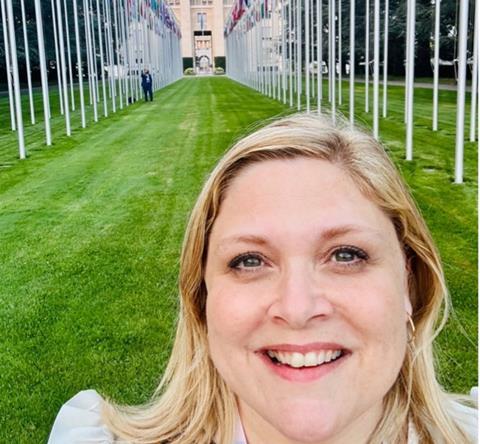
Emma Samson, marketing communications manager at Searious Business, gives us an inside look at the INC-5.2 negotiations, with just three days left to go in the process.
Over the last week, I have had the pleasure (and the frustration) of observing the negotiations at the final round of the INC for the Global Plastic Treaty. I have to admit that sitting silently in a contact group listening to delegates debate politely over commas and definitions has not tempted me into the world of international diplomacy, but the whispers in the corridors have been fascinating enough to keep me awake! Everyone here knows what is at stake, and the urgency is palpable.
With merely days left on the clock, the negotiations are moving at a snail’s pace. The draft text is bloated with thousands of brackets of unresolved edits. At the start, most of us assumed the bone of contention would be a cap on plastic production, while topics like product design and waste management would be generally supported. Instead, practically every issue has become a battlefield, even what time the meetings should finish; the Saudi Arabian delegation was adamant that 9 pm was late enough!
The divide across the room is vast. Small Island Developing States (SIDS) bring painful firsthand experience of the devastation caused by plastic pollution, while the HAC nations – diverse, modern economies well on their way to circular systems - see a global treaty as vital for protecting the planet, biodiversity and human health, as well as smoothing trade, raising standards, boosting innovation, and breaking fossil fuel dependence.
On the other side are mostly oil-producing states, who see strict rules on plastics as a threat to economic stability and their national autonomy. Many are understandably reluctant to hand over control of their natural resources to international scrutiny.
It’s easy to paint these countries as some kind of axis of evil, but I’ve met some of their delegates; they are not cartoon villains, they’re decent humans faced with tough decisions. No one wants plastic pollution, not even the petrochemical producers, but when oil is your identity, limits on production are a bitter pill to swallow. Consensus seems impossible.
Importantly, unanimity is not strictly necessary; there is already precedent for multi-lateral agreements to be accepted under majority voting. With 69% of countries demanding a strong treaty, including establishing sustainable production levels, a deal cutting out the laggards could be on the table, although enforcing import restrictions on manufacturing giants such as the US and China is daunting. The US has made its position clear: it will not support a treaty that does not align with its “Make America Great Again” agenda.
They even stated at one point, ‘this treaty is not about plastics’, to much amusement of the gallery. They have comments on every point, particularly financing, where they would prefer to bypass bureaucracy (and oversight?) of multi-lateral funds and instead mobilise funding through public-private partnerships. China, on the other hand, could well shake things up.
With its manufacturing scale, innovation capacity, and global supply chain reach, China is uniquely positioned to lead a circular transition. Will they pick up the gauntlet?
A breakthrough may hinge on Article 11 - the financing package. It’s always about the money. Plastic pollution already costs the global economy trillions annually, including $1.5 trillion in health-related losses, $300–460 billion in environmental and societal damages, and up to $2.5 trillion in marine ecosystem losses.
Cleanup and waste management add billions more, not to mention the cost of fossil fuel subsidies. Reduction and circular economy strategies, backed by a strong treaty, could reverse this trend, unlocking trillions in new economic opportunities and jobs.
Extended Producer Responsibility (EPR) measures alone would shift billions in costs from public budgets to producers. Could this tempt governments to shift thinking?
Ministers are arriving this week, bringing the political authority to strike deals and accelerate talks. The priority now must be to lock in a solid foundation of agreements that can be strengthened at future COPs.
But that foundation must clearly signal the direction, because COP decisions can take years to turn into real-world action. Treaty or no treaty, real world action has to happen now, not tomorrow. For those of us working in sustainability, it’s back to work on Monday!
Reflections at half-time
At the midpoint of the two-week INC-5.2 process, Packaging Europe is being told by multiple sources that the chances of reaching a “meaningful” outcome by the end of this week are currently low.
The Business Coalition for a Global Plastics Treaty, a group overseen by the Ellen MacArthur Foundation and WWF representing stakeholders from across the plastics value chain, has warned that negotiations are running out of time, with no clear path to an agreement.
The coalition is urging governments to act decisively and do everything in their power to establish an effective process. The time for incremental steps, it says, has passed.
“We’re at a unique moment in time where business, civil society, and a majority of countries are calling for harmonised regulation on plastic pollution,” says Nestle’s Jodie Roussel. “The time to act is now.”
In a bid to sway some of the delegates who would perhaps prefer to see a more watered-down treaty, the Coalition is focussed on stating the business case for a strong treaty.
“Our economic analysis shows that harmonised regulations on product design alone can create $50 billion per year in additional economic value for materials in the plastics recycling value chain,” says Rob Opsomer from The Ellen MacArthur Foundation.
Erin Simon, vice president plastic waste & business at WWF, told Packaging Europe of her frustration at some of the less ambitious delegates.
“We’re nearly halfway through INC-5.2 and the same, tired tactics are still causing gridlock at the negotiating table. We’ve been here before, and we know the same old playbook doesn’t work.”
“If we can’t turn this around, we risk leaving Geneva either empty-handed or with an empty treaty. It’s time for the majority to find their voice, choose a path and leave a legacy of progress not pollution.”
Similar arguments were voiced by the Scientists’ Coalition for an Effective Plastics Treaty.
“We already know enough today to justify acting with urgency. Disregarding the science will only exacerbate the impacts of plastics on health and the environment.
“The Scientists’ Coalition supports an effective, evidence-based treaty, and we stand ready to continue supporting Member State delegations, the co-facilitators, and the Chair in delivering on the commitment made at UNEA 5/14 to end plastic pollution.”
Meanwhile, the Children and Youth Major Group to UNEP highlighted the geopolitical implications of a potential failure to reach a consensus. “A failure at INC-5.2 would be yet another devastating blow to an already faltering multilateral order.”
Reflections after day one
It’s fair to say that the process of developing a legally binding treaty on plastic pollution up to now has been quite the journey. For an in-depth look at the history of the INC process, as well as a preview of this latest edition of the talks, INC-5.2, read our primer.
While Packaging Europe isn’t in attendance physically, we are in correspondence with a number of delegates on the ground.
Searious Businesses’ marketing communications manager, Emma Samson, told us that the emphasis on day one of INC-5.2 was on “constructive pragmatic conversations and the need to achieve the broadest possible alignments.”
She continued: “Some impassioned interventions from observer stakeholders such as Women’s Major Group (asking for gender considerations) and the International Chamber of Commerce who demanded product design rules to cover reuse, recycling and waste management that is appropriate for national contexts, stopping the leaking into the environment , innovation in new technology and specific funding to support SMEs in the transition.
Speaking on the crucial topic of plastic production caps, Inger Anderson (the delegate from the UN who is leading the talks) reportedly said that nothing has yet been resolved on this issue.
When she was asked what it would take to convince plastic producing countries to accept a treaty, sources tell us she responded by saying that delegates must take a lifecycle approach that includes product design and waste management, while allowing for differentiation according to national circumstances and capabilities.
Following this stately and diplomatic start, an anonymous source told us that things got “spicy” once the delegates split into contact groups.
Our source reports that the US delegation is against a treaty that might damage them economically, and that they do not want definitions included. In addition, it is alleged that the US delegates made a proposal for a new article that would in theory allow countries to be exempted from Treaty rules if they “affect national security.”
Egypt is also reported to be concerned about the Treaty affecting their domestic plastics industry, while it is said that Russia don’t want any mention of health in the final article.
Health is, however, top of the agenda for a number of other delegates – with a coalition of scientists warning of potential health impacts from microplastics and chemical additives.
Meanwhile, the Business Coalition for a Global Plastics Treaty, which counts many leading brand owners as members, is hard at work in a bid to demonstrate the economic benefits of supporting an effective treaty. Its representatives are meeting with delegates – particularly ones from non-aligned countries – with the aim of emphasising the well-being of their citizens, as well as job creation and enhancing growth.
One good way to determine how the talks are progressing is to refer to the WWF’s traffic light system.
This system ranks progress on what the WWF defines as its core areas of interest – issues like bans on specific plastic products, harmonised requirements on designs and systems, financing and implementation, and the ability to strengthen the treaty over time.
The WWF’s traffic light system rated progress on all of these metrics on the first day of INC-5.2 as either yellow or orange – indicating either slow or counterproductive progress.

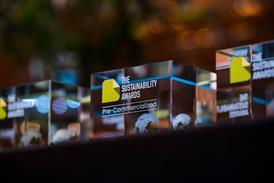
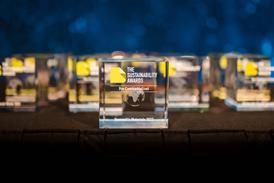
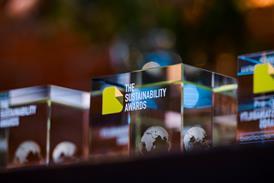

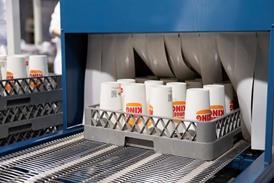





No comments yet